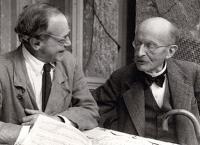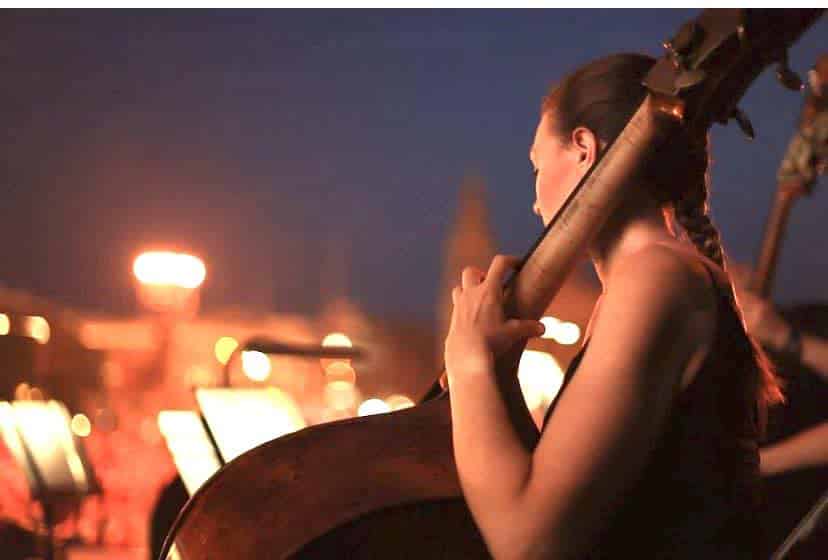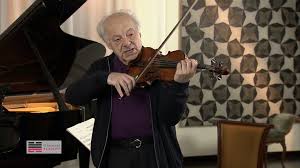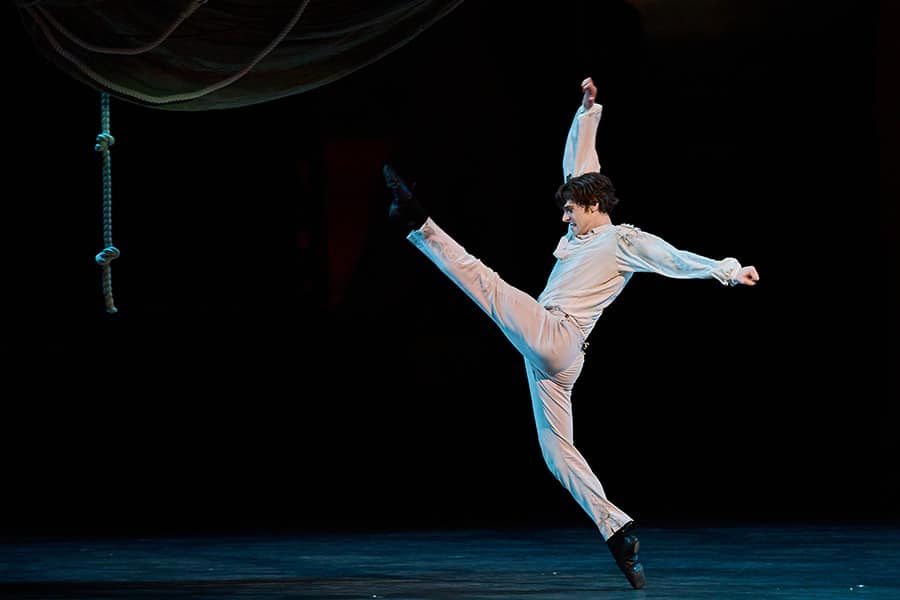The earliest string quartet on record?
mainWelcome to the 116th work in the Slipped Disc/Idagio Beethoven Edition
String Quartet No. 13 in B flat major op. 130
The end of this project is in sight. With just ten posts to go, I’m wondering if there is anything I have forgotten, any works of Beethoven that, lacking an opus numbers, have escaped my attention. If there are, now it the time to speak up
Ever since Covid-19 lockdown in March, I have been immersed in Beethoven for half of every working week. Perpetually challenging and revealing, even in works I thought I knew well, Beethoven has been the best companion I could have wished for in six months of stress and suffering, fear and fulfilment.
Life and work cannot be separated. His was not an exemplary life. He was completely self-centred, unable to form a meaningful relationship and hopeless with everyday practicalities. But all of his shortcomings fade to black as we receive the works of his mind, listening as he goes where no musician has gone before.
Some portray his life as tragic. I’m not sure I agree. Of course, the affliction of deafness is incomparably sad for a musician who was reaching for refinements of orchestral sound that he could no longer hear. His last years were dogged by pain in almost all his limbs and organs. He never knew an undisturbed night’s sleep.
But he did live a full life, two decades longer than Mozart, Schubert and Weber, longer than any of his contemporaries except Papa Haydn who, alone, achieved the full Biblical three score years and ten. And, in his 56 years Beethoven never had to abase himself for sustenance in the manner of Mozart and Haydn, actually condescending to some of the patrons whom he kindly allowed to support his pursuit of a more advanced and sophisticated mode of musical creation.
If not tragic, was he heroic? Certainly in his quixotic quest for the unheard and in his growing disdain for the way his music was received. By the time he reached the last quartets, he no longer heard anything and could go beyond all previous barriers of acceptable sound. But he never lost sight of, in the thick of his dark thoughts, the need to amuse and entertain.
Before you imagine the late string quartets to be deadly serious and inherently miserable listen to this account of the fourth movement of the 13th quartet. Written between August and November 1825, it drew howls of protest from his publisher, both because it was written in six movements instead of the statutory four and because the finale was reidiculously top-heavy, 16 minutes long, half as long as the preceding five movements put together. Couldn’t he supply a shorter finale?
Beethoven, for once, conceded one of the publisher’s points and wrote a different finale, a danging Allegro in place of would become, in a separate publication, the Grosse Fuge, opus 133. This recording by the La Salle Quartet, allows you to choose which finale you prefer.
But let me return to the previous track of the fourth movement which is among the earliest recordings ever made of a string quartet, taken in 1913. To my surprise, it presents late Beethoven not as a weighty thinker but as drawing-room entertainment, suitable for guests at tea-time. At the start of the 20th century musicians did not stand in awe of Beethoven as much as we do today, esepcially if they could claim a direct link to the composer.
The players here are the Klingler Quartet, led by Karl Klingler who was associate concertmaster of the Berlin Philharmonic from 1901 and second violin in Joseph Joachim’s quartet, the cornerstone of string quartet history and among the first performers of late Beethoven. The other members of Klingler’s quartet were a Russian, Josef Rywkind, a Welshman Arthur Williams and Klingler’s brother Fridolin. The group broke up in August 1914 as two of its members were designated enemy aliens and interned in the misleadingly named Ruhleben camp.
After the war, Klingler formed a close friendship with the Nobel Prize winning physicist Max Planck, with whom he played quartets and discussed geometry.

There is a remarkable photo of them together, taken at Klingler’s country home in 1944 with both men looking happy, removed from the horrors that surrounded them. The picture is deceptive. Klingler, whose wife was half-Jewish, had been targeted by the Nazis after he refused to give the Hitler salute in his classes and objected to the removal of the bust of Joachim, his mentor. Sacked from the university, he spent some time in Switzerland before returning to live at his wife’s family estate near Osterburg. Soon after this photo was taken the Gestapo came calling to interrogate the violinist about his connections with Planck, who was suspect for his friendship with Albert Einstein. The secret police were even more interested in Planck’s son, Erwin, a cellist who used to play trios with his father on piano and Einstein on the violin. Erwin Planck was arrested in July 1944 for his alleged involvement in an assassination plot against Hitler. Despite desperate appeals by Max to the entire Nazi hierarchy, Erwin was hanged in a Berlin jail in January 1945. Klingler and Max Planck lived out the war in constant fear.
Klingler survived into his 90s, playing chamber music with his family almost to his dying day on March 18, 1971. Quite unexpectedly he acquired a different kind of fame. In the 1920s, he had attracted pupils from all over the world, among them a young Japanese with unorthodox ideas on music education. Shinichi Suzuki spent eight years in Berlin as Klingler’s private pupil while evolving the hotly disputed Suzuki method for teaching children to play musical instruments by rote. Klingler’s daughter became his greates fan, founding a charity to provide financial support to emergent string quartets who practised the Suzuki method.
By this curious connection, the Suzuki method can claim a tangential legitimacy from Beethoven, vestigial as it might be, through Klingler, Joachim, his patron Mendelssohn and Beethoven himself.
But I digress. I am supposed to be discussing the opus 130 string quartet and its 50-odd recordings. That will be the next post in our Idagio series.
UPDATE: Some more physics?
Tegid Wyn Jones writes: Between 1931 and 1934, Albert Einstein visited Oxford. A quartet was formed with Einstein, Marie Soldat, Erna Schutz and Klingler’s cellist Arthur Williams.





“Some portray his life as tragic. I’m not sure I agree. Of course, the affliction of deafness is incomparably sad for a musician who was reaching for refinements of orchestral sound that he could no longer hear. His last years were dogged by pain in almost all his limbs and organs. He never knew an undisturbed night’s sleep.”
You’re forgetting his repressed homosexuality. See his nephew. Think how painful that must have been.
“And, in his 57 years Beethoven never had to abase himself for sustenance in the manner of Mozart and Haydn….” Wrong on the part of Mozart. Anyone who has visited Mozart Haus will realize Mozart was not poor and that he didn’t abase himself as Haydn surely did. He left a patron in Salzburg and lived off of his work which was not associated with an aristocratic family. I’d say Mozart was bolder than Beethoven.
Haydn born 1732, Mozart 1756, Beethoven 1770. Things changed in career possibilities for musicians in over the 18th century. But I must protest at the idea that Haydn abased himself. He was the Esterhazy Kapellmeister for much of his life, with a budget that enabled him to get top players for his band. Judging by his output, he had a lot of artistic freedom. Is that so much worse than being the musical director of a big city orchestra with a Board of Directors and rich opinionated patrons to kowtow to?
Exactly. The profession of freelance artist, on the part of those who weren’t independently wealthy, was just coming into existence during the course of the 18th century. Consider Rousseau and Diderot in literature, de la Tour and Chardin in painting. Yes, Haydn waited until late in his life to go freelance, but that was following the death of his music-loving patron and the succession of his unmusical son.
Did you mention the Beethoven Trio for flute, bassoon, and piano, WoO 37? Three equali for four trombones? Three duos for clarinet and bassoon?
There is the Romance Cantabile for flute, bassoon, piano, and orchestra, completed by Hess.
And, of course, there is Rage for a Lost Penny.
I read most, but not all, of your entries in this series. I may have missed these.
I don’t think you wrote about the Fantasia for Piano and Chorus Op. 80
It makes an apt CD companion to the Liszt Beethoven monument cantata NL discoursed about yesterday.
The span of 56 years, 3 months, 10 days, is well short of 57 years.
==a Welshman Arthur Williams
This great cellist was interned as an enemy alien, causing the quartet to be disbanded. Nice he got a name-check here
The Russian Rywkind was also interned as an enemy alien.
Arthur Williams (1875 – 1939) – some facts
He played the cello without the spike.
He and his wife were interned in the Ruhleben camp – a former race course near Berlin. His wife was
exchanged for a German internee in 1915 and Arthur in 1916. Neither were to recover their health after WW1
AW was to find employment in Walford Davies’
Music Department at the University of Wales Aberystwyth.
AW lived at Ty’n y Bedw in the village of Llanfihangel
Genau’r Glyn (Llandre for short !!) 5 miles north of
Aber.
His last orchestral concert was in Aberystwyth 1925. An orchestra assembled from all of Wales was conducted by Edward Elgar. The Enigma Variations was followed by AW playing the
Cello Concerto. At the end of the concert Elgar
gave a wonderful tribute to AW.
Between 1931 and 1934 Albert Einstein visited Oxford. A quartet was formed – Marie Soldat, AE,
Erna Schutz and AW.
Sometime in the 1930’s the Griller quartet camped
near the seaside in Borth to receive instruction from
AW
Praise the Lord we are a musical nation !!
Tegid Wyn Jones
Fabulous stuff… I am so thrilled to know this.
Wonderful to hear the Klingler Quartet again on this Sunday morning, thanks to SD. There is a 2- CD box with their recordings, highly recommended. They seem to have been the last quartet before WWII to sit with the violins in antiphonal seating, just like the Joachim Quartet did, until only about 20 years ago this original (most common in the days from Haydn until and including Bartók) quartet seating slowly started returning, here and there. Though many orchestras (and some conductors) have kept (or returned to) that way of seating for the strings, most string quartets from the late 40’s (including my former quartet, the Schoenberg Quartet, starting in the late 70’s) imitated the seating of the post WWII quartets. Perhaps the new invention of stereo recording was responsible for the seating of high to low, from left to right? That is the only explanation that I can think of. Anyway, in my opinion it is a pity that it happened, as the antiphonal seating (and not standing…) is in my experience (having played for more than a decade in each of those seatings) by far the best choice of the three options. Here you can find an interesting and very critical article about the often quoted perhaps ‘invented’ Klingler-Suzuki connection: https://markoconnorblog.blogspot.com/2013/09/suzuki-klingler-not-what-you-expected.html
A wonderful (although too brief) essay, Henk, and may I say that I enjoy immensely the work of the Schoenberg Quartet on CD.
You mention “former” quartet; has the group disbanded?
In any case, hank you for your sterling work!
I own that Klingler set, BTW – it is really interesting and well worth searching out. Of course, the antiphonal effect is nonexistent in those ancient recordings!
Yes,the Schoennberg Quartet stopped in 2009, after 33 years.
*thank* you. I did not purposely intend to make a play on words with your name!
Another fine essay on Klingler, Max Planck, Suzuki, and ghr dtring quartet, Norman. Henk Guitart’s comments on quartet antiphonal seating are valuable.
For WoO works rating discussion, there is the “Duett mit zwei obbligagen Augenglaesertn” in E-flat for Viola and Cello that brrthoven wrote for himself and his musical Count Zmeskal (sp?) to play, discovered in 1927 in one of the conversation books, and gloriously recorded by William Primrose and Emanuel Feuermann in 1941, and a few times since, a sonata-allegro of about seven minute.s
Also Beethoen’s only chaconne, which he called 32 Variations on an Original Theme in C minor, nearly killed because of a misundeerstood anecdote, but attracting early recorded attention from Sergei Rachmaninoff, Horowitz, Constance Keene, Elly Ney, Brendel, Gould, and more recently Konstantin Lifschitz.
I think the three piano quartets written at age 15 also merit discussion
Yes, Edgar – the piano quartets are remarkable, especially the one in E flat – the sublime opening is surely a portent of things to come. And there are the three ‘Elector’ sonatas (not in the numbered series of 32) written at about the same time). One of them is in F minor – the same key as his first official piano sonata Op 2/1 – a key that is often used for works of great intensity – for example, his Appassionata sonata, Haydn’s Variations for piano and his symphony no. 49 – ‘La Passione’.
Shortly after the Great War, Efrem Zimbalist and Fritz Kreisler recorded Bach’s double-violin concerto with a string quartet, I think anonymous or perhaps not considered worthy of a name. Otherwise the Flonzaleys are the earliest quartet I remember hearing before Leners and others.
Joseph Joachim recorded a few short pieces in old age in the early 1900s, including I think Bach and a hungarian Dance.
You have to get in a special frame of mind to listen to acoustic recordings of violinists and other string players who used the restrained vibrato of the era, the plentiful rubato and portamento, and let it not be forgotten, were probably forced to sit or stand in a rather unnatural posture for the benefit of the recording horn, and in a room which was deliberately “dead” acoustically. I had not heard Klingler’s playing before and it is delightful; his was a name I knew mostly for a cadenza to Viotti’s Concerto No. 22.
I was also unaware he played second violin in the Joachim Quartet as the usual names one sees for that organization are Heinrich De Anha, Johann Kruse, and Karl/Karel Halir. Joachim had a second quartet that gave his London concerts, but the second violin there was named Ries. The “always reliable” Wikipedia says Klingler played viola in the Joachim Quartet, but even there the names I have always seen are Emanuel Wirth for the “European” Joachim Quartet and Webb for the London version.
There are other very early string quartet recordings, but as with the Kreisler/Zimbalist Bach Double, not always of string quartet music. In 1914 Maud Powell recorded the Handel Largo with string quartet – with subtle reinforcement of the bass from a tuba, something which continued even into early electrical recordings. She also recorded with string quartet and harp for a few items. But apart from this and other early Klingler recording, the earliest “real” string quartet recordings (often isolated movements) I know of are, as Edgar points out, the Flonzaleys, the Leners, as well as the London Quartet and one or another of the iterations that Mischa Elman had in the early 1920s (also acoustic recordings) of an Elman String Quartet.
This is a bit of a tangent, but your tuba comment brought something to mind.
During a rehearsal break of Prokofiev Romeo and Juliet (pre-COVID-19), I chatted with the tubist about the prominent tuba part, how it doubles the low strings more pervasively than usual. His opinion is just what you wrote: that Prokofiev wrote the tuba part to help reinforce the bass in early recordings.
If my not altogether reliable memory serves, David, that Kreisler/Zimbalist Bach Double also has a tuba playing the continuo bass line.
Kreisler is my favorite violinist, and I also really enjoy Maud Powell’s records, but I simply can’t listen to a tuba in the continuo.
Sorry – it’s just the way I’m built. I certainly have no allergies to old recordings (I can even listen with some enjoyment to the Mapleson cylinders), but a tuba in the continuo is like a tuba replacing Scott LaFaro in the Bill Evans Trio. It is something my ears do not accept.
Greg, perhaps you were traumatized by listening too often to “Tubby the Tuba” in your childhood record collection (I had the Victor Jory version I think)?
Interesting that you should mention jazz because the tuba lasted into jazz/dance music recordings further and longer into the electrical era of 78s than it did in classical recordings, and of course it remains used in Dixieland (uh oh is that word still allowed?) jazz. Jazz and dance bands that did not have a tuba player on staff for live performances had one for recordings. A golden age for the gigging tuba player, at least those who lived near Camden.
Unless my ears deceive me I think there is subtle tuba reinforcement on at least some sides of the Fritz Kreisler/Leo Blech 78s of the Beethoven Concerto. I definitely hear one in the opening measures of the Rosa Ponselle/Ezio Pinza waxing of “La vergine degli angeli” from Verdi’s La Forza del Destino.
Thanks, David.
I’m going to relisten closely to that Kreisler/Blech/Beethoven. It hasn’t ever struck me before as being tubafied.
Re: the tuba in jazz, there was a dichotomy in the 20s, 30s, and 40s between so-called “jazz” bands (which actually played dance music and very little jazz) and true “hot” jazz players (who mostly played in small groups). There are of course exceptions, but the “hot” ensembles left the tuba behind much earlier than the dance-oriented groups, particularly after electrical recording came in around 1926.
For instance, Count Basie, who led one of the hottest of jazz bands, was famous in the early 30s for his great bassist Walter Page, who could play tuba, and very well, but ceased doing so very early in his career, when he was with Bennie Moten.
But Paul Whiteman, who led a self-proclaimed “jazz” orchestra which was anything but, kept the tuba well into the 40s. PW did have “hot” players in his band from time to time, such as the fabulous Bix Beiderbecke, but kept them around only to “jazz up” 4 or 8 bars here and there.
(BTW, It’s interesting that the tuba made a brief comeback in Miles Davis’ “Birth of the Cool” sessions in 1949-50.)
And of course the word “Dixieland” is still allowed, even though it’s by now hanging on by a mere thread, but the musicians themselves prefer the terms “trad” or “New Orleans revival” music.
Victor Jory, that raspy-voiced, craggy-faced film noir actor of the 40s and 50s, singing “Tubby the Tuba”? I’d pay money to hear that!
– best regards, Greg
Thank you for this information about Klingler, who was the beloved teacher of my teacher Eleonore Schoenfeld and her sister Alice. Eleonore spoke often of him at our lessons but I never knew anything of his life story.
“drawing-room entertainment, suitable for guests at tea-time” – this opinion is hardly possible except from the POV of someone who knows so few old recordings that they all sound like “drawing-room entertainment” at the first portamento. Surely not NL????
Hotly disputed Suzuki method? Not really, aside from Mark O’Connor, whose virulent opposition to the method detracts from the authority his criticism might otherwise carry. Did you mean to “diss” the method by including video of a beginner? Ray Chen and hundreds of other successful professionals would likely take issue with your implication.
Agreed. O’Connor sure has a stick up his arse when it comes to Suzuki Method. And important to note that he sells his own method, which gives us a clue as to why.
I think you could find a lot of string teachers who are tired of having to explain that “Suzuki” is a method, not a miracle.
“… Klingler, whose wife was half-Jewish… ”
This sounds remarkable. I wonder what the circumstances were that she did not get deported?
Herbie G. — The three Elector piano sonatas WoO, yes, I should have mentioned them. Even Gilels played them.
The three piano quartets I thought must have been modeled on Mozart’s turn out to have been written about the same time; Beethoven probably didn’t yet know them It’s still a relatively rare form.
t’s touching to hear Beethoven’s often strong beginnings, ambitious, obviously on the path to greatness, and recognise his models, influences, and idiosyncracies among original things peculiar to him.. rememberimg his hard circumstances, early teachers and supporters in Bonn. Everything in the life of such a creative genius is significant and of interest, even his misfires and relative failures.
It’s one reason I like Bronislaw Hubermann, in addition to his anti-fascism, world peace efforts, help in auditioning and forming what became the israel Philharmonic, he has an individual sound and attack unlike any other. I like him most for his completely re-though entry in Beethoven’s concerto with Georg Szell and the Vienna Philharmonic from 1934. He was alredy reording a decade earlier, had played for, and been praised by, Brahms. Not to every taste, but to mine, and Rob Cowan’s of “Gramophone”.
No other Hubermann recording moves me as much, but all interest me and command attention.
Ev Even resisters find good words for his “Kreutze’ sonata with ignaz Friedmann. The concerto with Szell is a watershed, either blood-curdling or ravishing. I was surprised to hear many similarities to it in Janine Jensen’s with Masur. Szell’s VPO recording isn’t bad, once past the sour oboe in the first bars, then onto those glorious Vienna double-basses. The rapt, hushed episodes are hard to forget, but so is an old-fashioned portamento such as I haven’t heard since Mischa Elman.
HMV issue an unusual single in 1940 for Polish relif: Schubert’s “Litanei” and a faux-Handelian “Dank sei dir, Herr” sung by Hulda lashanska with Elman, Emanuel Feuermann, and Rudolf Serkin.
Critics of the day spoke of Hubermann’s “passionate philosophising”